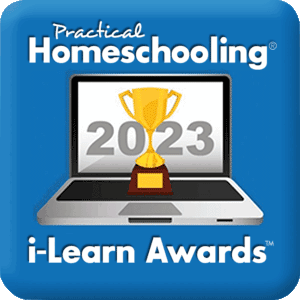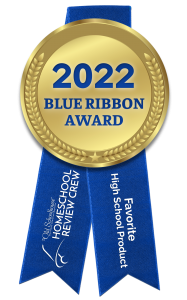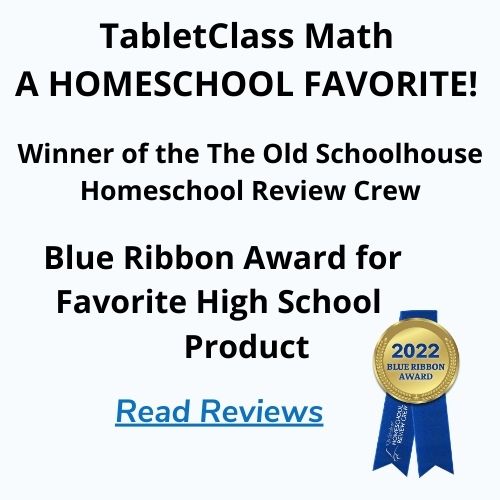“TabletClass Math has given my daughter the confidence to excel in areas she was not doing so before. She has personally said that she likes the set up of the class, how he gives the objectives before the lesson and reviews afterwards to make sure she gets what was taught. ”
“TabletClass Math has given my daughter the confidence to excel in areas she was not doing so before. She has personally said that she likes the set up of the class, how he gives the objectives before the lesson and reviews afterwards to make sure she gets what was taught.”




TabletClass Math makes homeschooling Precalculus easy. We include the right amount of instruction your child needs to excel.
Our teacher, John Zimmerman, cares about your child’s success. He guides students every step of the curriculum with clear and understandable instruction that will help build their confidence in math.
Homeschool Precalculus Curriculum Summary
The homeschool Precalculus curriculum is designed as a high school third year or fourth year college prep math course. The goal of the precalculus course is to prepare students for college level mathematics, especially Calculus. A strong foundation in the concepts and skills of Algebra 2 is required, as well as a graphing calculator like a TI-83 or TI-84.
Precalculus is a demanding course even for strong math students – extra commitment and dedication will be required to do well in this course, as the concepts are far more advanced than Algebra 2.
The first part of the precalculus curriculum is an extensive series of sections on algebra topics that students should have mastered in Algebra 2. Also, new advanced concepts will be introduced in the area of function analysis and rational functions.
Part 2 of the curriculum focuses on Trigonometry to include many of the advanced topics a student will need to be prepared for Calculus. The chapters on Trigonometry are equivalent to a stand-alone Trigonometry course.
The last part of the homeschool precalculus curriculum covers other advanced math topics to include conic sections, matrices and determinants, systems, partial fractions, sequence, and series and probability.
“As a homeschooling Mom of seven children, spanning 25 years, we have used multiple math curriculums. TabletClass math is hands down, no comparison, the best we have used! I honestly am so thankful for it every day. What a relief to find a program that is thorough, no gaps, detailed steps for all kinds of learners, and it is enjoyable to learn with Mr. Zimmerman! I know because for the first time in my life, I have enjoyed math as I have worked alongside our boys. And, they are able to watch the videos as many times as they want and when they complete a course, Mr. Zimmerman has a final exam complete with study tips, etc so that we know they are proficient. Thank you, thank you, thank you for Tabletclass math!”
-Lisa S.
Chapters
Sections
Videos
Chapters
Sections
Videos
Chapter 1: Linear Functions – Equations and Inequalities (Optional Review)
This chapter reviews many of the fundamental algebra skills that students should have mastered in Algebra 1 and Algebra 2. Students are encouraged to take the time to go over these sections to ensure they are ready for the more advanced concepts later in the course.
Sections:
- 1.1 One Step Equations
- 1.2 Solving Two Step Equations
- 1.3 Solving Multi-Step Equations
- 1.4 Formulas and Literal Equations
- 1.5 Linear Inequalities
- 1.6 Compound Inequalities
- 1.7 Introduction to Absolute Value
- 1.8 Solving Absolute Value Equations
- 1.9 Absolute Value Inequalities
- 1.10 Graphing Absolute Value Equations
- 1.11 Graphing Lines with One Variable
- 1.12 Graphing Lines with Two Variables
- 1.13 The Slope of a Line
- 1.14 Slope Intercept Method
- 1.15 XY Intercept Method
- 1.16 Writing the Equations of Lines -Using Slope-Intercept Form
- 1.17 Writing the Equations of Lines -Using Point-Slope intercept
- 1.18 Writing the Equations of Lines -Given the Slope and a Point
- 1.19 Writing the Equations of Lines -Given Two Points
- 1.20 Standard Form of Linear Equations
- 1.21 Best Fitting Lines and Scatter Plots
- 1.22 Linear Models/Word Problems
- 1.23 Graphing Linear Inequalities in Two Variables
Chapter 2: Relations, Functions and Graphs
Functions and relations transcend all through mathematics. The first part of this chapter reviews core concepts at the Algebra 1/2 level. The second part of this chapter covers more advanced study of the topic of functions and relations. Time is taken to explain the difference between a function and relation and introduce the student to the language of functions to include the domain, range and linear/nonlinear functions.
Students will also learn function operations, composite functions and graphing. Lastly, students will learn how to transform functions as well as doing a detailed analysis of the domain and range of functions.
Sections:
- 2.1 Introduction to Functions and Relations
- 2.2 Function Operations
- 2.3 Inverse Functions
- 2.4 Graphing Functions
- 2.5 Linear and Nonlinear Functions
- 2.6 Special Functions
- 2.7 Composite Functions
- 2.8 Interval and Set Builder Notation
- 2.9 Function Symmetry
- 2.10 Transformations of Functions
- 2.11 Function and Relation Analysis (Finding Domain/Range)
Chapter 3: Polynomial and Rational Functions
The first part of the chapter reviews all the concepts and skills to solve second-degree polynomials which are quadratic functions. Next, the student will learn advanced techniques and concepts to solve a polynomial equation of any degree. Lastly, the chapter covers rational functions to include graphing a rational function and solving a rational inequality.
Sections:
- 3.1 Introduction to Quadratic Equations
- 3.2 Solving Quadratic Equations by Square Roots
- 3.3 Graphing Quadratic Equations
- 3.4 The Quadratic Formula
- 3.5 Solving Quadratic Equations by Factoring
- 3.6 The Discriminant – Types of Roots
- 3.7 Completing the Square
- 3.8 Quadratic Equation Word Problems
- 3.9 Graphing Quadratic Inequalities
- 3.10 Complex and Imaginary Numbers
- 3.11 Graphing Polynomials
- 3.12 Solving Polynomial Equations by Factoring
- 3.13 Polynomial Division (Long and Synthetic Division)
- 3.14 Remainder and Factor Theorem
- 3.15 Rational Root Theorem (Rational-Zero Test)
- 3.16 Solving n-degree Polynomials (Fundamental Theorem of Algebra)
- 3.17 Descartes’ Rule of Signs and Bounds
- 3.18 Graphing Rational Functions (Vertical and Horizontal Asymptotes)
- 3.19 Rational Inequalities
Chapter 4: Logarithmic and Exponential Functions
For most students this chapter will be their first introduction to logarithms. As such the chapter focuses on teaching the basic core concepts of a logarithm and its relationship to an exponential function. Students will learn how to covert between a logarithm/exponential equation.
Additionally, the chapter defines the properties of logarithms and how to condense and expand logarithmic expressions. The Natural Base e and Natural logarithms are explored with explanations of how to use the “log and ln” functions on a scientific calculator. Finally, the chapter covers the methods and procedure to solve exponential and logarithmic equations.
Sections:
- 4.1 Exponential Growth and Decay Functions
- 4.2 Introduction to Logarithms
- 4.3 Properties of Logarithms
- 4.4 The Natural Base e
- 4.5 Natural Logarithms
- 4.6 Solving Logarithmic Equations
- 4.7 Solving Exponential Equations
Chapter 5: Trigonometric Functions
This very important chapter introduces the student to advanced trigonometry. Concepts involving the trigonometric ratios, sin, cos, tan, radians are explored. Next, the chapter focuses on evaluating trigonometric functions and finding the inverse of a trigonometric function. Lastly, students learn to graph sin, cos, tan, csc, sec, and cot graphs. Special note: students will need their graphing calculators for the chapter practice problems.
Sections:
- 5.1 Trigonometric Ratios
- 5.2 Angles of Rotation and Radian Measure
- 5.3 Evaluating Trigonometric Functions
- 5.4 Inverse Trigonometric Functions
- 5.5 Graphs of Sine and Cosine Functions
- 5.6 Graphs of Other Trigonometric Functions
Chapter 6: Trigonometric Identities and Equations
This chapter continues to explore more topics in trigonometry – the focus of this chapter is trigonometric identities. Students will learn how to use and verify trigonometric identities.
Students will also learn how to solve a trigonometric equation. A wide of variety of trigonometric identities will be covered to include the fundamental identities, sum and difference, double and half angle, and product and sum identities.
Sections:
- 6.1 Trigonometric Identities
- 6.2 Solving Trigonometric Equations
- 6.3 Sum and Difference Identities
- 6.4 Double-Angle and Half-Angle Identities
- 6.5 Product and Sum Identities
Chapter 7: Applications of Trigonometry
This chapter explores many applications of trigonometry at an advanced level. Students will learn how to solve non-right triangles using the Laws of Sine and Cosine. Next, the chapter will focus on polar (trigonometric) forms of complex numbers and how to take the powers and roots of complex numbers using trigonometry. Additional related topics are explored to include vectors and parametric equations.
Sections:
- 7.1 Laws of Sine and Cosine
- 7.2 Polar Equations
- 7.3 Trigonometric Form of Complex Numbers
- 7.4 Powers and Roots of Complex Numbers (De Moivre’s Theorem)
- 7.5 Vectors
- 7.6 Parametric Equations
Chapter 8: Conic Sections (Analytic Geometry)
This chapter explores the shapes that can be constructed from various sections of a cone – hence the name of the chapter is called “conic sections”. Students will learn the equations and related terminology of circles, parabola, ellipses and hyperbolas. Lastly, students will learn the how identify conic sections given various forms of equations and the techniques to translate conic sections graphically.
Sections:
- 8.1 Circles (Conic Sections)
- 8.2 Parabolas (Conic Sections)
- 8.3 Ellipses (Conic Sections)
- 8.4 Hyperbolas (Conic Sections)
- 8.5 Translations of Conic Sections
Chapter 9: Systems of Equations and Inequalities
The first part of this chapter reviews techniques to solve linear systems – skills covered in Algebra 1 & 2. Students will also explore special systems, word problems and systems of linear inequalities. The topic of Linear Programming will be reviewed, as well. The second part of the chapter covers advanced system topics such as partial fractions and solving 3-variable and non-linear systems.
Sections:
- 9.1 Solving Systems by Graphing
- 9.2 Solving Systems Substitution Method
- 9.3 Solving Systems by Elimination/Linear Combination
- 9.4 Solving Linear Systems Word Problems
- 9.5 Special Linear Systems
- 9.6 Solving Systems of Linear Inequalities
- 9.7 Linear Programming
- 9.8 Partial Fractions – Part 1
- 9.9 Partial Fractions – Part 2
- 9.10 Three Variable and Nonlinear Systems
Chapter 10: Matrices and Determinants
This chapter introduces the core concepts of matrices and determinants to students. Time is taken to teach terminology and common applications of matrices. Students will learn how to perform various matrix operations to include matrix addition, subtraction, multiplication, and scalar multiplication.
Additionally, students will learn the steps to find determinants and inverse of a matrix. The chapter also focuses on how matrices can be used to solve linear systems by using an inverse matrix or Cramer’s Rule.
Sections:
- 10.1 Introduction to Matrices
- 10.2 Matrix Operations
- 10.3 Matrix Multiplication
- 10.4 Determinants
- 10.5 Identity and Inverse Matrices
- 10.6 Solving Systems using Inverse Matrices
- 10.7 Solving Systems using Cramer’s Rule
Chapter 11: Sequence, Series and Probability
The first part of this chapter is a deep look into sequence and series. Sections in this part of the chapter include an introduction to sequence and series concepts, arithmetic sequence and series and geometric sequence and series. Also, included is a section on infinite geometric series.
The next part of the chapter covers basic concepts of probability to include a discussion into the Law of Large Numbers and a section on more advanced concepts like independent, dependent and mutually exclusive events. In addition to probability there is a section on counting theory which will look at how to count using trees and the Fundamental Principle of Counting.
Lastly, the chapter will look into counting arrangements using combinations and permutations.
Sections:
- 11.1 Introduction to Sequence and Series
- 11.2 Arithmetic Sequence and Series
- 11.3 Geometric Sequence and Series
- 11.4 Infinite Geometric Series
- 11.5 The Binomial Theorem
- 11.6 Introduction To Probability
- 11.7 Counting Theory
- 11.8 Probability of Independent, Dependent and Mutually Exclusive Events
- 11.9 Permutations and Combinations
“I found TabletClass Math during my online search for a math curriculum for my home-schooled child. Being new to homeschooling, I knew I wanted a curriculum just as good or better than public school instruction, but comprehensible enough for me as the parent to facilitate. When we came across tablet class it seemed promising, so we decided to try the pre-algebra curriculum– and we are so glad we did! We really love how clear cut and concise the instruction is. Mr. Zimmerman’s methodology of teaching is easy to understand because he breaks concepts down and makes them very practical to solve. I can honestly say that TabletClass Math has given my daughter the confidence to excel in areas she was not doing so before. She has personally said that she likes the set up of the class, how he gives the objectives before the lesson and reviews afterwards to make sure she gets what was taught. She has also said that she appreciates how he speaks “plain English” and how he tries to make the lessons fun. We are so pleased with the curriculum, we decided to move on to Algebra 1 and will continue to use it during the remainder of her high school years! So glad we chose to give this a try”
-Nikki and Harmoni
TabletClass Math provides everything your child needs to master math with confidence and ease.
Expert-Led Instruction
Benefit from our teacher's 25+ years of experience with our comprehensive math courses, ensuring your child receives the highest quality education.
Comprehensive Lessons
Engaging, in-depth lessons designed for all learning styles. Includes lesson videos and practice problem examples covering a wide range from basic to advanced.
Worksheets, Notes & Quizzes
Worksheets and summary notes align with each section topic for maximum practice. Quizzes help identify areas for improvement ensuring comprehension.
Parent Resources
Access pacing guides, tests with answer keys, and a final exam via the Parent Portal to track progress, calculate grades, and issue a homeschool completion certificate.
Sample Lesson Video
Example Problem Video
Ready to get started with Pre-Calculus?
Monthly Subscription – $25
(auto-renewal/cancel anytime)
6 Month Access – $95
(save $55 – one time fee/no auto-renewal)
12 Month Access – $150
(save $150 – one time fee/no auto-renewal)
Optional Parent Resources – $25
(Course Test Pack – one time fee/unlimited access)
“Not even one week into the program and I love it. Even though I’ve always struggled with math you make it seem really easy in the videos. I just wish I had discovered this program even 1 month before I started taking college algebra. It’s really convenient that you have all the subject matters in almost exact order of how they are being taught in my college level course as well. I am learning a lot of the fundamentals that the college instructor doesn’t teach because it’s stuff you’re already supposed to know when you get there. I’m spending hours on your site and am learning a lot! Would totally recommend this program to anyone who needs a little help with math. Love that this material will be available to me for a year. After this fast-paced course that I am taking, I plan on going back and starting at the beginning and trying to learn everything properly the way I should have learned it if I’d gone to high school”
-Jazmin J.

